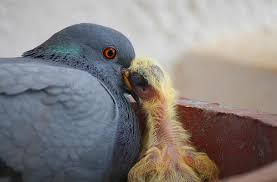You are currently browsing the monthly archive for June 2016.

Today (June 30th) is asteroid day. For this auspicious (yet anxious-making) holiday, I have been saving two asteroid-related miniature stories ripped from the headlines.

First, we return to the dwarf planet Ceres, the largest object in the asteroid belt. We need to revisit the bright spots upon the dwarf planet’s surface. Ever since the New Horizons spacecraft began to approach the little world, these glistening spots have fascinated the astronomy community. Initially scientists thought that the spots were composed of hydrated magnesium sulfate (a substance quite similar to the Epsom salts sold for bathing and foot-soaking), however it now seems like the shiny patches are made of something else entirely. According to astronomers, the particular chemical in these glistening patches actually turns out to be sodium carbonate–a salt formed from carbon. On Earth, this chemical usually forms in evaporitic conditions–when water evaporates from a lake, sea, or hot springs. This seems to indicate that the geology of Ceres is more complicated than initially thought—instead of a big ice crystal which has always been the same, the miniature planet has undergone changes: surface water evaporated to leave these mysterious chemical deposits. Hopefully finding out about Ceres’ past can teach us more about how planets form (or don’t form).
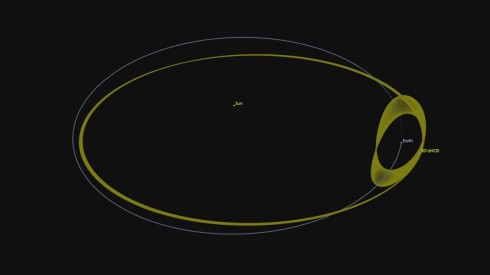
Second, we turn our eyes back closer to Earth to take in the newly discovered “second moon” a tiny asteroid about the size of the great pyramid of Giza which seems to be orbiting Earth. This new asteroid, called 2016 HO3, is not really a true moon but a quasi-satellite: it sometimes loops around our planet because Earth and the little rock both orbit the sun on a similar circuit. The asteroid orbits the sun in 365.93 days (just slightly longer than Earth’s orbit of 365.24 days). Thus, for the next few hundred years it will act like a true moon as our orbits converge. The rock is about 40 meters (130 feet) across by 100 meters (328 feet) wide. It is a bit strange to think about it up there hidden in the darkness, but it is a fairly comforting asteroid day story. 2016 HO3 is never destined to hit Earth. The really bad asteroids seem to be the ones we don’t know about (so it is time to keep our eyes on the skies and learn more).

Ahh mascots…It has been too long since we peaked into the strange representational world of symbolic characters. A mascot is meant to bring good luck…and what could be luckier than a pigeon (which, after all, live virtually everywhere and tend to be in robust health). When it comes to living in a city, no mascot (except maybe the rat or Joan Rivers) could be more appropriate. Therefore here is a little gallery of pigeon mascots. Sadly Samsung has not mastered iridescent monitor technology so you will have to use your imagination to add the glossy feathers and cooing.

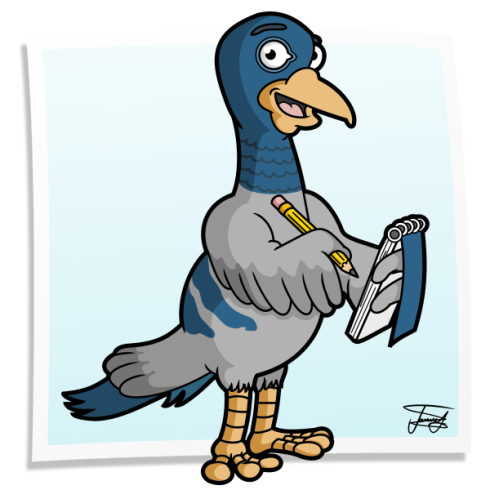
This one is by Jamie Sale, who will design a mascot for you if you find him on the internet and properly incentivize him (look the pigeon is drawing mascots!)


I don’t know if it counts, but here is a stunning Louis Lejeune Hood Ornament.






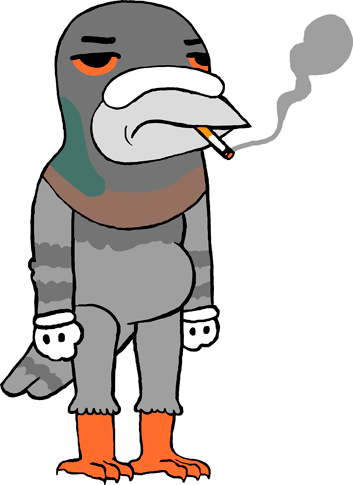
Some of these guys look a little bit like they came from a really dirty episode of “Family Guy”or maybe escaped from mascot jail… but urban birds are a bit gritty so perhaps that is as it should be. At least they gloriously encapsulate pigeon pride

or not…

Ok, a while back Ferrebeekeeper poked some fun at the royal crown of Holland. Thriftiness is a famous national characteristic of the Dutch and the coronation crown, made of fish paste and thinly gilded metal certainly encapsulates that dubious virtue. However, the Dutch had a globe spanning empire for a long time and do they have some exceedingly nice things. Here is the Dutch Sapphire tiara, an 1881 love gift from King Willem III of the Netherlands to his wife, Queen Emma. The magnificent tiara features 33 blue sapphires and 655 diamonds set in platinum. The shape is meant to evoke the great Gothic cathedrals of the Middle Ages, but the workmanship is the finest the 19th century had to offer. A number of the stones are mounted “en tremblant”, which means they are attached to subtle springs which vibrate slightly with movement causing them to scintillate and glisten even more dazzlingly!

Here it is being worn by Queen Maxima of Holland. Maxima is a great name for a queen!

Some of my favorite colors are orange-pinks. These lovely hues have a glowing warmth which evokes summer (and human skin). They seem particularly bright in the magic hour of summer sunset as golden light gilds the world.

However orange pink colors are somewhat lacking when it comes to beautiful names. My pencil box is filled with evocatively named green pencils, but the orange ones tend to be named “orange”. One of my favorite colors in my paintbox goes by the unlovely name “Italian brown-pink.”
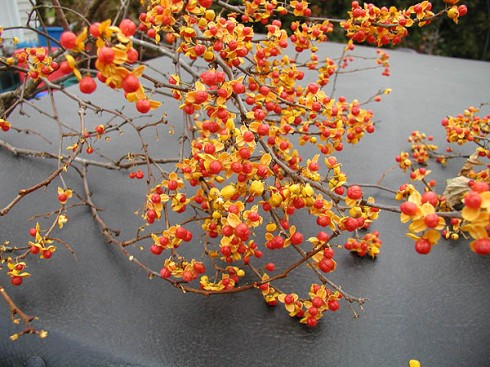
OLYMPUS DIGITAL CAMERA
However, I just found out about the color “bittersweet” a beautiful mid-to-bright orange-pink. The name has a long pedigree—going back to the nineteenth century (a shocking number of familiar colors have names from the late twentieth century). Bittersweet suggests an ending which is satisfying…barely, and I though the name of the color was some sort of thoughtful moral reflection about the nineteenth century overall, however it turns out that the color is named for the bittersweet vine, a flowering vine which strangles trees and which causes vomiting if eaten. Hmm…why is the beauty of the world always so muddled up with ambiguous and alarming things? The effect is positively…bittersweet
It’s time for our monthly installment of the Shepheardes Calender, an epic poetic journey through the 12 months of the year which takes the form of dialogues between classically-minded shepherds concerning love, poetry, sheep, and politics. Ultimately the poem is about nature and the nature of reality and, of course, it is about love. We have come half-way through the year, from January’s abject darkness to glowing light of June. The exceedingly beautiful month of May featured a very peculiar and dark sort of fable. Likewise glorious June features a sad tale of love lost… The beauteous shepherdess Rosalind has left Colin for his arch-rival…yet this lament is couched within lovely pastoral poetry.
What is going on with this thing anyway? Who are these people and what are they talking about? Spenser wrote his poems for sophisticated classically-trained courtiers who delighted in unraveling complicated intrigues and unmasking hidden figures. By this time, it has become plain that the unhappy, but gifted Colin represents Spenser himself. Likewise the figure of Tityrus, “the God of Shepherds,” is Chaucer, the progenitor of English verse. The identity of Rosalind, who appeared back in January to inaugurate the entire work, would seem to be the central mystery of The Shephearde’s Calender, but who she is…whether she represents love in general, or fame, or poetry…or whether she is some actual golden haired beauty whom the melancholic Spenser fixated upon is lost in time.
The poetry of each season has an entirely different character just as the months are each different. So far the words have been honeyed and filigreed to the point where they are too pretty to understand, but June features the summer solstice–the turn of the year. As the year darkens and winds down, the poems become earthier and easier to understand. Perhaps we can get some closure on this Colin/Rosalind romance then, but if things are not good in June, when will they be good?
Well, there are still six months to come, but for now, here is June’s Aeglogue:

Aeglogue
HOBBINOL. COLIN.
Lo! Colin, here the Place, whose pleasant Sight
From other Shades hath wean’d my wandring Mind:
Tell me, what wants me here, to work Delight?
The simple Air, she gentle warbling Wind,
So calm, so cool, as no where else I find:
The grassy Ground with dainty Daisies dight,
The Bramble Bush, where Birds of every kind
To th’ Water’s Fall their Tunes attemper right.
COLIN.
O! happy Hoblinol, I bless thy State,
That Paradise hast found which Adam lost.
Here wander may thy Flock early or late,
Withouten Dread of Wolves to been ytost;
Thy lovely Lays here mayst thou freely boast:
But I, unhappy Man! whom cruel Fate,
And angry God, pursue from Coast to Coast,
Can no where find, to shroud my luckless Pate.
HOBBINOL.
Then if by me thou list advised be,
Forsake the Soil, that so doth thee bewitch:
Leave me those Hills, where Harbrough nis to see,
Nor Holly-bush, nor Brere, nor winding Ditch;
And to the Dales resort, where Shepherds rich,
And fruitful Flocks been every where to see:
Here no Night-Ravens lodge, more black than Pitch,
Nor elvish Ghosts, nor ghastly Owls do flee.
But friendly Fairies, met with many Graces,
And lightfoot Nymphs can chace the lingring Night,
With Heydeguies, and trimly trodden Traces;
Whilst Sisters nine, which dwell on Parnass’ hight,
Do make them Musick, for their mere Delight;
And Pan himself to kiss their crystal Faces,
Will pipe and daunce, when Phoebe shineth bright:
Such peerless Pleasures have we in these Places.
COLIN.
And I, whilst Youth, and Course of careless Years,
Did let me walk withouten Links of Love,
In such Delights did joy amongst my Peers;
But riper Age such Pleasures doth reprove,
My Fancy eke from former Follies move
To stayed Steps: for time in passing wears
(As Garments doen, which wexen old above)
And draweth new Delights with hoary Hairs.
Tho couth I sing of Love, and tune my Pipe
Unto my plaintive Pleas in Verses made:
Tho would I seek for Queen-Apples unripe,
To give my Rosalind, and in Sommer Shade
Dight gawdy Girlonds, was my common Trade,
To crown her golden Locks: but Years more ripe,
And Loss of her, whose Love as Life I wayde,
Those weary wanton Toys away did wipe.
HOBBINOL.
Colin, to hear thy Rimes and Roundelays,
Which thou wert wont on wasteful Hills to sing,
I more delight, then Lark in Sommer Days:
Whose Eccho made the neighbour Groves to ring,
And taught the Birds, which in the lower Spring
Did shroud in shady Leaves from sunny Rays;
Frame to thy Song their cheerful cheriping,
Or hold their Peace, for shame of thy sweet Lays.
I saw Calliope with Muses moe,
Soon as thy Oaten Pipe began to sound,
Their Ivory Lutes and Tamburins forgo:
And from the Fountain, where they sate around,
Ren after hastily thy silver Sound.
But when they came, where thou thy Skill didst show,
They drew aback, as half with Shame confound,
Shepherd to see, them in their Art out-go
COLIN.
Of Muses, Hobbinol, I con no Skill,
For they been Daughters of the highest Jove,
And holden Scorn of homely Shepherds-Quill:
For sith I heard that Pan with Phoebus strove,
Which him to much Rebuke and Danger drove,
I never list presume to Parnass’ Hill,
But piping low, in shade of lowly Grove,
I play to please my self, albeit ill.
Nought weigh I, who my Song doth praise or blame,
Ne rive to win Renown, or pass the rest:
With Shepherd fits not follow flying Fame,
But feed his Flock in Fields, where falls him best.
I wote my Rimes been rough, and rudely drest;
The fitter they, my careful Case to frame:
Enough is me to paint out my Unrest,
And pour my piteous Plaints out in the same.
The God of Shepherds, Tityrus is dead,
Who taught me homely, as I can, to make:
He, whilst he lived, was the sovereign Head
Of Shepherds all, that been with Love ytake.
Well couth he wail his Woes, and lightly slake
The Flames, which Love within his Heart had bred,
And tell us merry Tales, to keep us wake,
The while our Sheep about us safely fed.
Now dead he is, and lieth wrapt in Lead,
(O why should Death on him such Outrage show!)
And all his passing Skill with him is fled,
The Fame whereof doth daily greater grow.
But if on me some little Drops would flow
Of that the Spring was in his learned Hed,
I soon would learn these Woods to wail my Woe,
And teach the Trees their trickling Tears to shed.
Then should my Plaints, caus’d of Discourtesee,
As Messengers of this my painful Plight,
Fly to my Love, wherever that she be,
And pierce her Heart with Point of worthy Wight;
As she deserves, that wrought so deadly Spight.
And thou, Menalcas, that by Treachery
Didst underfong my Lass to wax so light,
Should’st well be known for such thy Villany.
But since I am not, as I wish I were,
Ye gentle Shepherds, which your Flock do feed,
Whether on Hills, or Dales, or other where,
Bear witness all of this so wicked Deed:
And tell the Lass, whose Flowre is woxe a Weed,
And faultless Faith is turn’d to faithless Fear,
That she the truest Shepherd’s Heart made bleed,
That lives on Earth, and loved her most dear.
HOBBINOL.
O! careful Colin, I lament thy Case,
Thy Tears would make the hardest Flint to flow!
Ah! faithless Rosalind, and void of Grace,
That are the Root of all this rueful Woe!
But now is time, I guess, homeward to go;
Then rise, ye blessed Flocks, and home apace,
Lest Night with stealing Steps do you foreslo,
And wet your tender Lambs, that by you trace.
COLIN’S EMBLEM.
Gia speme spenta.
[Works, ed. Hughes (1715) 4:1074-78]
Aww…look: a baby planet! This is the youngest known exoplanet—a mere 5 to 10 million years old. It orbits its star every 5 days—a ridiculously short year which puts even Mercury’s 88 day orbit to shame (although, to be fair, the planet is 10 times closer to its star than Mercury is to the sun). The newly discovered world is approximately 500 light years from Earth. Researchers discovered the world with the Kepler space telescope (which continues to disgorge a treasure trove of data, even after its primary mission has ended because of mechanical failure).
The planet is thought to be about the size of Neptune. Since its star, K2-33, is only 10 million years old, the planet is assumed to be younger than that…though who knows. The strange nature of this system may cause scientists to rethink and refine their models of planetary formation. It isn’t the sort of thing they expected (though these super-hot giant planets right next to their stars seem to be more common than anyone would have guessed).

Last week, Ferrebeekeeper promised pigeons. So this week, let’s start off with the monarch of pigeons—the magnificent Victoria crowned pigeon (Goura victoria). Native to the coastal forests of New Guinea, this splendid bird not only has a magnificent “crown” of lovely ornamental feathers, it is the largest living pigeon in the world. Adult pigeons weigh up to 3.5 kg (7.7 pounds). The plumage of the Victoria crowned pigeon is blue-gray except for the maroon chest, and pale gray wingtips. Their crowns are made up of little gray fans with white fringes. They have blood red eyes which are surrounded by a little black mask of feathers.

The Victoria crowned pigeon is named in honor of Queen Victoria (who was on the throne of England when the bird was discovered by English ornithologists). The Victoria crowned pigeon is a gregarious social bird. Parties of pigeons walk together around the swampy rainforest floor looking for fruit, which is the mainstay of the bird’s diet (although they also sometimes supplement their diet with seeds and arthropods).

Crown pigeons built intricately crafted nests in trees where the females lay a single white egg. Both parents actively tend the egg and the nestling. The vocalizations of Victoria crown pigeons sound like studio audience noises from nineties talk shows. According to Wikipedia “[mating calls consist of a] hoota-hoota-hoota-hoota-hoota sound. When defending their territories, these birds make a resounding whup-up, whup-up, whup-up call. Their contact call is a deep, muffled and rather human-like ummm or hmmm.”
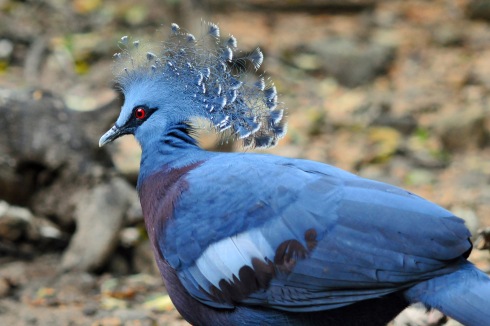
Crown pigeons are not uncommon in the wild but the live birds are collected for the pet trade and the birds are hunted for meat and for their remarkable head feathers. Humans have a weakness for trying to take their beautiful crowns to build into our own headwear.
It has been a while since I blogged about my garden—which is a shame since it has been unusually beautiful this year. Alas, I am not an especially good photographer, but here are two little garden pictures so you can relive the end of May and the beginning of June with colored pencil drawings.

Night Ruler Iris (Wayne Ferrebee, 2016, colored pencil and ink on paper)
Here is “Night Ruler” the dark violet iris which I blogged about last year. It had about two good days before a rainstorm knocked down the 4 foot flower spikes—but they were two GOOD days. There is hardly a flower more beautiful than the near-black German iris.
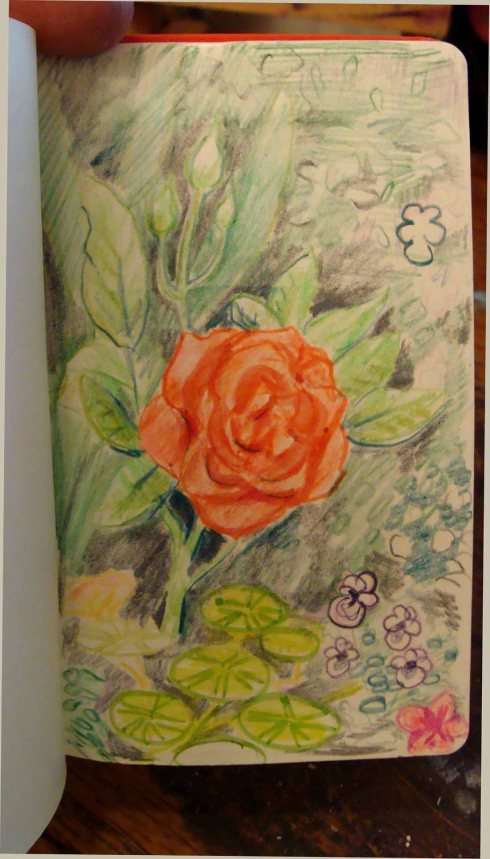
Livin’ Easy Rose (Wayne Ferrebee, 2016, colored pencil and ink on paper)
Here is another beautiful flower, a floribunda rose named “Livin’ Easy” which is sort of a fluorescent coquelicot color. It is hard to get the vibrancy of the color of this beautiful little rose (and even more difficult to capture the heavenly smell). Maybe you will have to imagine the joy of rose season here in late spring/ early summer.

Today we feature one of Australia’s best-known and best-dressed snakes, the red-bellied black snake (Pseudechis porphyriacus). This exceedingly handsome reptile lives all along the eastern coast of the island continent and grows to lengths of 1.5 to 2 meters (5.5 to 6.5 feet). It is a generalist predator which eats small mammals, reptiles (including fellow red-bellied black snakes) arthropods, and above all, frogs. This fetching snake is a member of the elapidae family—a group of toxic snakes which includes such famous genera as coral snakes, cobras, and kraits.

The red-bellied snake is indeed venomous: its venom is a complex mixture of neurotoxins, myotoxins, and coagulants. However, when the snakes bites people (which they are loath to do) they rarely inject a lethal dose of venom. When threatened they try to hide in the urban woodlands, billabongs, or scrublands where they live. If backed into a corner they will make a threat display by extending their cobra-like hood and hissing. Australians, who live with many horrifying venomous snakes, seem to regard red-bellied black snakes as comparatively benign although I certainly wouldn’t want one to bite me!).
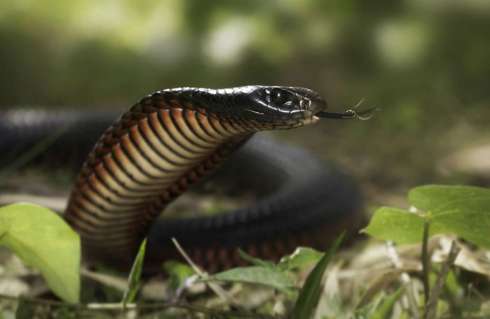
Snakes of this species are ovoviviparous—they hold their eggs inside their body until the young hatch. This is no mean feat, since mother snakes can give birth to litters of up to 40 little baby snakes!



 As a city dweller, I sometimes fall into the trap of thinking of pigeons (Columbidae) solely as the rock doves (Columba livia) which are the familiar gray and iridescent birds. Rock Doves originated in North Africa, Central Asia, and Europe. Humans domesticated these birds in antiquity and carried them everywhere during the age of exploration and colonization. Like the hero of a dystopian novel, the rock dove then cast off its oppressors (manipulative giant primates who were selectively breeding it to kill it and eat it!) and escaped to freedom and worldwide success. However the rock dove is not the only pigeon—not at all—there are over 310 species in this family. They are found everywhere on land except for the polar regions. Some pigeons are analogous to clever tropical parrots, whereas others live like songbirds, or jungle fowl, or like grouse. They live in deserts, jungles, forests, sand dunes, scrubland, cropland, caves…pretty much everywhere except for oceans and tundra. Humankind has destroyed a few species of pigeons like the passenger pigeon, the giant pigeon (A.K.A. the Dodo), and the Socorro dove–an oddity which is extinct in the wild but lives cradled in the arms of pigeon fanciers like former heavyweight champion Mike Tyson, however most doves are tough and resilient. They thrive in our concrete cities. They make livings as performers in Vegas! They fly into empty niches and expand to fill them out.
As a city dweller, I sometimes fall into the trap of thinking of pigeons (Columbidae) solely as the rock doves (Columba livia) which are the familiar gray and iridescent birds. Rock Doves originated in North Africa, Central Asia, and Europe. Humans domesticated these birds in antiquity and carried them everywhere during the age of exploration and colonization. Like the hero of a dystopian novel, the rock dove then cast off its oppressors (manipulative giant primates who were selectively breeding it to kill it and eat it!) and escaped to freedom and worldwide success. However the rock dove is not the only pigeon—not at all—there are over 310 species in this family. They are found everywhere on land except for the polar regions. Some pigeons are analogous to clever tropical parrots, whereas others live like songbirds, or jungle fowl, or like grouse. They live in deserts, jungles, forests, sand dunes, scrubland, cropland, caves…pretty much everywhere except for oceans and tundra. Humankind has destroyed a few species of pigeons like the passenger pigeon, the giant pigeon (A.K.A. the Dodo), and the Socorro dove–an oddity which is extinct in the wild but lives cradled in the arms of pigeon fanciers like former heavyweight champion Mike Tyson, however most doves are tough and resilient. They thrive in our concrete cities. They make livings as performers in Vegas! They fly into empty niches and expand to fill them out.

